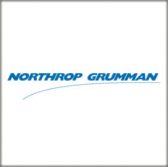
Northrop Grumman provided a propulsion system component that helped United Launch Alliance’s Delta IV Heavy rocket lift a new NASA spacecraft Sunday from Cape Canaveral in Florida into space.
The third stage is built to carry the agency’s Parker Solar Probe in its intended orbit as part f a mission to study the effect of the sun’s changing conditions on the solar system, Northrop said Sunday.
Delta IV Heavy launched the spacecraft at a top speed of over 121 miles per second.
Northrop also integrated several of its modified flight-heritage components such as stand-alone avionics, ordnance, structures and flight software on the third stage for the spacecraft to endure high radiation conditions.
Additionally, the third stage includes the STAR 49BV solid rocket motor, which is designed to place the spacecraft into its final trajectory.
Apart from studying the sun, the Parker Solar Probe will also help refine space weather event predictions.
The spacecraft will pass by the sun 24 times and Venus six times during its seven-year mission, with initial scientific findings expected to be sent back to Earth by December.




